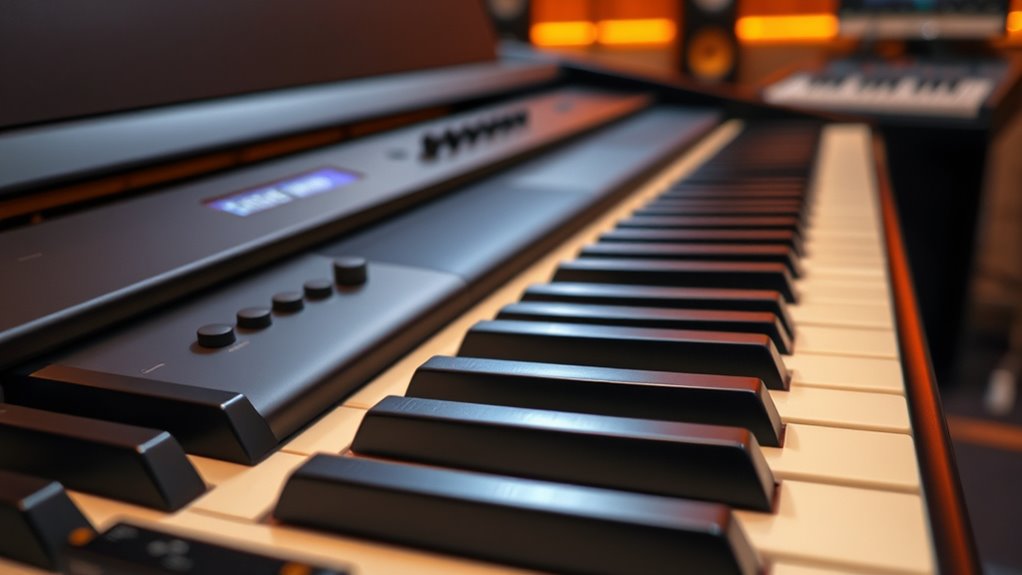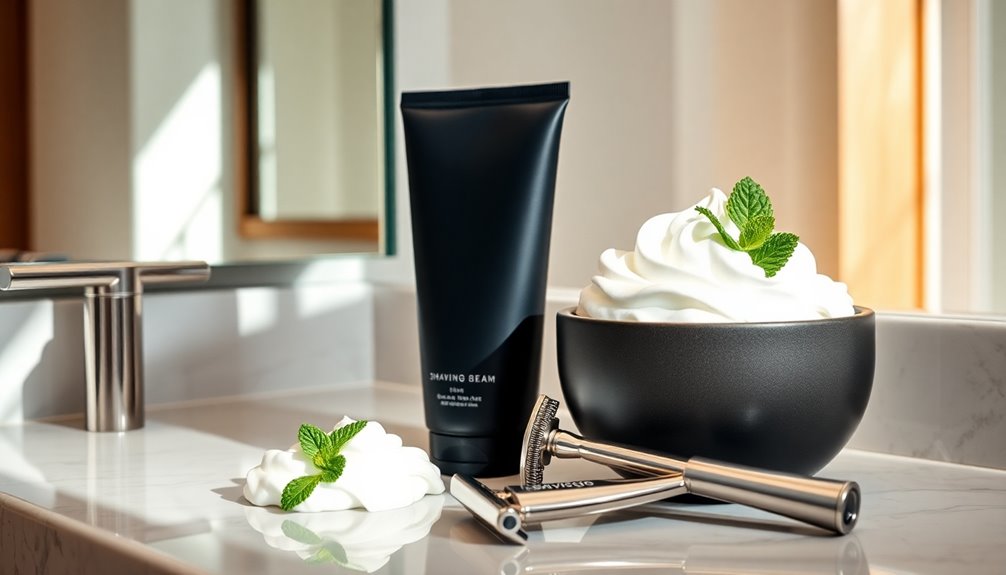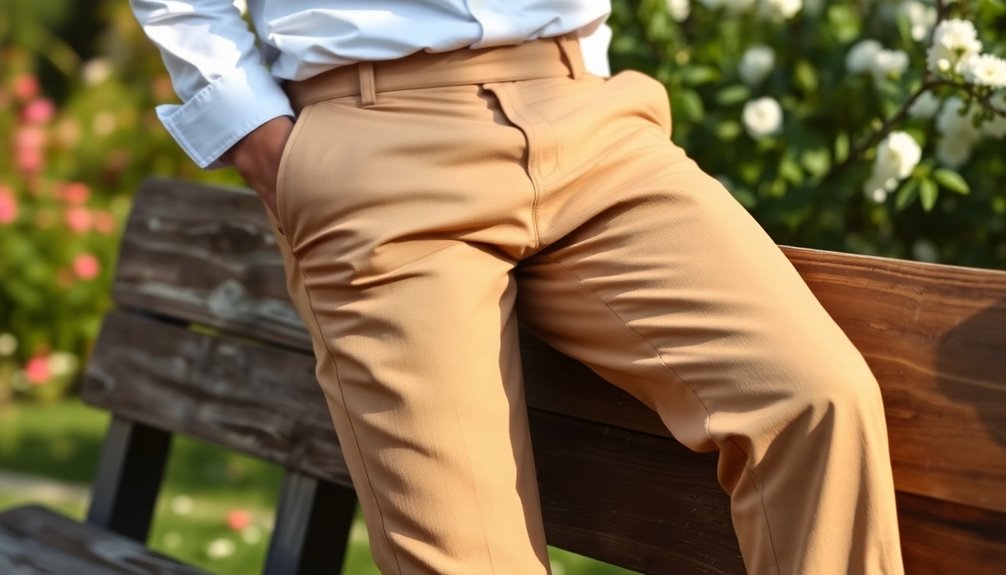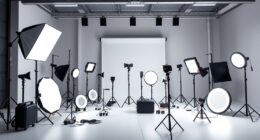If you’re looking for the 15 best digital pianos that offer authentic sound and a realistic playing feel, I’ve found top models like the Alesis Recital, Yamaha P71, and RockJam keyboards. These options feature weighted keys, high-quality voices, and versatile connectivity, perfect for beginners and seasoned players alike. Whether you want portability or a full-featured setup, there’s something here to match your needs. Keep exploring to discover which one might be the best fit for you.
Key Takeaways
- Choose models with graded hammer-action keys for authentic acoustic piano feel.
- Prioritize keyboards with high-quality sound engines like French DREAM or Dream5704.
- Look for features like touch sensitivity, velocity response, and multiple instrument voices.
- Consider connectivity options such as USB, MIDI, and Bluetooth for versatile use.
- Opt for complete packages with stands, pedals, and accessories for an all-in-one experience.
Alesis Recital 88-Key Digital Piano Keyboard
If you’re looking for an affordable yet versatile digital piano, the Alesis Recital 88-Key Digital Piano Keyboard is an excellent choice for beginners and intermediate players alike. Its full-sized 88 keys have semi-weighted action with adjustable touch response, offering a realistic feel. The stylish, compact design with a lacquered finish makes it suitable for any space. Equipped with 20W built-in speakers, it provides clear, room-filling sound. Connectivity options like USB, RCA outputs, and headphone jacks make practice and external playing easy. Weighing just around 6.3 pounds, it’s portable and sturdy, perfect for home, studio, or on-the-go use.
Best For: beginners and intermediate players seeking an affordable, portable digital piano with realistic touch and sound quality.
Pros:
- Full-sized 88 keys with semi-weighted action and adjustable touch response for a realistic playing experience
- Powerful 20W built-in speakers deliver clear, room-filling sound
- Versatile connectivity options including USB, RCA, headphone, and sustain pedal input for practice and external use
Cons:
- Slightly lightweight build at around 6.3 pounds, which may affect durability for heavy travel
- Keys are semi-weighted and may not fully replicate the feel of an acoustic piano for advanced players
- Some users experience volume or key response issues that may require adjustments or troubleshooting
YAMAHA P71 88-Key Digital Piano with Pedal
The YAMAHA P71 88-Key Digital Piano with Pedal stands out as an excellent choice for beginners and casual players seeking an authentic piano experience without sacrificing portability. Its full-sized, weighted keys replicate the feel of an acoustic piano, with heavier low notes and lighter high notes. At just 25 pounds, it’s easy to move and fits well in any home or gig setting. It includes a sustain pedal, USB port, headphone jack, and connects easily to amplifiers or software. With ten premium voices and features like layered sounds and reverb, it offers rich, dynamic tones that stay consistent over time, making it a reliable, versatile instrument.
Best For: beginners, casual players, and those seeking a portable, realistic digital piano for home practice, gigs, or learning.
Pros:
- Full-sized weighted keys provide an authentic acoustic piano feel suitable for all skill levels
- Lightweight and compact design makes it easy to transport and fits in various spaces
- Rich sound quality with multiple voices and layering options for versatile playing
Cons:
- No built-in MIDI port, relying solely on USB for digital connectivity
- Original sustain pedal may slide around; users often upgrade for better stability
- Limited advanced features compared to higher-end digital pianos, which may be a consideration for professional performers
RockJam 61-Key Digital Piano with Bench and Accessories
Designed with beginners and casual players in mind, the RockJam 61-Key Digital Piano with Bench and Accessories offers an all-in-one package that’s perfect for learning and practicing. Its sleek design features full-sized keys that mimic a traditional piano feel, suitable for all ages. The portable, durable build includes a stand, foldable padded stool, headphones, and a sustain pedal, making setup easy. With a touch screen interface, it provides access to 200 sounds, rhythms, and demo songs, alongside interactive learning features. Plus, its MIDI connectivity and recording capabilities support both practice and music production, making it a versatile choice for beginners and more experienced musicians alike.
Best For: beginners, casual players, and young learners seeking an all-in-one, portable digital piano with educational features and MIDI connectivity.
Pros:
- Includes comprehensive accessories such as stand, stool, headphones, and sustain pedal for a complete setup
- User-friendly touch screen interface with a wide range of sounds, rhythms, and learning tools
- Portable and durable design suitable for practice, performance, and music production
Cons:
- Some users report occasional power glitches and connectivity issues
- Build quality may vary, with potential concerns about long-term durability
- Limited advanced features for professional or highly experienced musicians
RockJam 61-Key Keyboard Piano Stand Kit
For beginners seeking a complete and portable digital piano package, the RockJam 61-Key Keyboard Piano Stand Kit stands out as an excellent choice. It includes a full-size 61-key keyboard with modern features like 200 tones, 200 rhythms, and a teaching function, all powered by a 2020 chipset for high-quality sound. The kit comes with a sturdy adjustable stand, a foldable padded bench, headphones, and helpful accessories, making setup easy and transport simple thanks to its lightweight design. Connectivity options like USB and AUX enhance learning and playing, while the included learning content and user-friendly features make it perfect for beginners and casual players alike.
Best For: beginners and casual players seeking a portable, all-in-one digital piano package with essential accessories and learning features.
Pros:
- Includes a full-size 61-key keyboard with a variety of tones, rhythms, and learning functions for versatile practice.
- Comes with a sturdy adjustable stand, padded bench, headphones, and accessories, offering great value in one kit.
- Lightweight and portable, making it easy to set up and move around for practice at home or on the go.
Cons:
- The stand may be wobbly, affecting stability during use.
- Battery life is limited to around 2 hours, which might require frequent replacements or switching to mains power.
- Some users find the sound quality, particularly the piano tone, less authentic and the default volume to be excessively loud.
Yamaha 88-Key Digital Piano Keyboard with Speakers and USB
If you’re looking for an affordable, portable digital piano that delivers authentic piano feel, the Yamaha 88-Key Digital Piano Keyboard with Speakers and USB is a top choice. Its weighted keys mimic the touch of an acoustic piano, offering dynamic expression. The built-in speakers and simple one-button control make it user-friendly, while the included sustain foot switch adds to performance versatility. With 10 instrument voices, including a rich Yamaha grand piano sound, it provides immersive audio for practice or performances. Its sleek black finish and compact design make it perfect for beginners and casual players seeking quality sound and authentic feel in a portable package.
Best For: beginners and casual players seeking an affordable, portable digital piano with authentic feel and versatile sound options.
Pros:
- Weighted keys provide an authentic acoustic piano experience with dynamic expression
- Built-in speakers and USB connectivity enhance usability and sound quality
- Simple one-button operation and included sustain foot switch improve ease of use
Cons:
- Limited to 10 instrument voices, which may be restrictive for more advanced users
- Compact design might lack advanced features found in higher-end digital pianos
- Black finish may show fingerprints and scratches more visibly over time
Yamaha 61-Key Portable Keyboard for Beginners
The Yamaha PSR-E283 61-key portable keyboard stands out as an excellent choice for beginners who want a realistic playing experience without breaking the bank. Its full-sized, touch-sensitive keys respond naturally to playing dynamics, making practice more engaging. With hundreds of sounds, including rich piano tones accessible via a dedicated button, it’s versatile for various musical styles. Built-in songs and learning features like Quiz Mode and Smart Chord help beginners develop skills easily. Lightweight and portable, it’s perfect for practice at home or on the go. Overall, it offers a compelling mix of authentic feel, sound quality, and educational tools, making it ideal for new players.
Best For: beginners and casual players seeking an affordable, portable keyboard with realistic keys and educational features.
Pros:
- Responsive, full-sized touch-sensitive keys for authentic playing experience
- Wide variety of sounds and built-in songs for learning and entertainment
- Lightweight, portable design suitable for practice anywhere
Cons:
- Some users experience volume fluctuations during use
- Keys may feel slightly slippery for some players
- May lack certain accessories like a power adapter in the package
88 Key Digital Piano with Stand, Pedal, Power Supply, Headphones
A 88-key digital piano with a stand, pedal, power supply, and headphones offers an all-in-one setup perfect for beginners and intermediate players alike. Its semi-weighted keys provide an authentic, responsive touch that closely mimics a traditional piano. The included stand and carrying case make it portable and easy to set up anywhere. With 128 instrument voices and 80 demo songs, it encourages musical exploration and practice. Bluetooth connectivity expands creative options, while the headphones ensure private practice sessions. This complete package simplifies starting your musical journey, offering essential accessories bundled together for convenience and versatility, whether at home or on the go.
Best For: beginners and intermediate players seeking an all-in-one, portable digital piano with authentic feel and versatile features.
Pros:
- Semi-weighted 88 keys for realistic piano touch and expression
- Includes essential accessories like stand, pedal, headphones, and carrying case for convenience
- Bluetooth connectivity and multiple instrument voices for creative flexibility
Cons:
- May lack advanced features found in higher-end digital pianos
- Built-in sounds and demo songs might be limited for professional use
- Portability could be affected by the size and weight of the stand and case
88-Key Digital Piano Keyboard with Stand, Power Supply, Sustain Pedal, Bluetooth, MIDI — for Beginners & Professionals
Designed with both beginners and professionals in mind, this digital piano offers an authentic playing experience thanks to its 88 semi-weighted keys and responsive touch. The inclusion of a stand, power supply, and sustain pedal makes setup straightforward, while Bluetooth and MIDI connectivity expand creative possibilities. With 128 instrument voices, rhythms, and 80 demo songs, it’s versatile enough for practice, performance, or exploration. The carrying case guarantees portability, and headphones allow silent practice. Whether at home or on stage, this keyboard provides a realistic, expressive feel and extensive features that support growth and creativity for players of all levels.
Best For: Beginners to professionals seeking a versatile, portable digital piano with authentic touch and extensive features for practice, performance, and creative exploration.
Pros:
- Authentic, responsive semi-weighted 88 keys providing a realistic playing experience
- Wide variety of sounds, rhythms, and demo songs for versatile musical exploration
- Convenient connectivity options including Bluetooth and MIDI for expanding creative possibilities
Cons:
- May be heavier and bulkier compared to compact digital pianos, affecting portability slightly
- Advanced users might find limited customization options for sound editing
- Requires external power supply, which may be inconvenient for some users in certain settings
Donner 61 Key Electronic Keyboard Piano Kit with Stand, Stool, Microphone
If you’re looking for an all-in-one keyboard package that combines quality sound, versatile features, and user-friendly design, the Donner 61 Key Electronic Keyboard Piano Kit is an excellent choice. It offers 249 voices, 249 rhythms, and 50 demo songs, along with three teaching functions that suit beginners and intermediates alike. The included stand, adjustable stool, sheet music stand, and microphone make setup simple and convenient. Its touch-sensitive keys provide a natural feel, and with two built-in 10W speakers, the sound is clear and powerful. The HD LCD display, recording capabilities, and multiple connectivity options enhance learning and performance, making it a versatile, value-packed option.
Best For: beginners and intermediate players seeking a comprehensive, easy-to-use digital keyboard for practice, learning, and performance.
Pros:
- Includes a complete bundle with stand, stool, microphone, and accessories, ideal for immediate setup and use.
- Features 249 voices, 249 rhythms, and 50 demo songs, offering extensive sound options and learning tools.
- Touch-sensitive keys and powerful built-in speakers provide a realistic playing experience with clear sound.
Cons:
- Some users find navigation of instrument buttons and manual instructions to be unclear or complex.
- Basic microphone quality and occasional missing accessories like power cords may require additional purchases.
- Limited advanced features may not suit professional or highly experienced musicians.
Amazon Basics Electric Keyboard 88-Keys
The Amazon Basics Electric Keyboard 88-Keys stands out as an excellent choice for beginners and casual players seeking a full-size, portable digital piano. Its semi-weighted keys provide an authentic touch with quick rebound, making playing comfortable and natural. Weighing only about 15 pounds, it’s easy to move around and perfect for home use. The keyboard features 140 tones, 200 rhythms, and 16 demo songs, offering plenty of musical variety. While some find the sound a bit tinny, overall, it delivers good tone for its price. The included sustain pedal, music stand, and connectivity options make it a versatile, budget-friendly option for learners.
Best For: beginners, casual players, and learners seeking an affordable, portable full-size digital piano with essential features.
Pros:
- Semi-weighted keys offer an authentic piano touch suitable for practice and beginners
- Lightweight design (~15 pounds) makes it easy to transport and set up in various locations
- Wide variety of sounds, rhythms, and educational features support diverse musical exploration
Cons:
- Limited pedal options due to proprietary 6-pin connection and short cord length
- Sound quality may be tinny or hollow compared to acoustic pianos, especially for advanced players
- Keys are full-size but semi-weighted, not as fully weighted as professional-grade instruments
Donner DDP-80 PLUS Digital Piano with 88 Keys
For serious players and learners seeking authentic acoustic piano experience, the Donner DDP-80 PLUS stands out with its full-size 88-key weighted keyboard and French DREAM sound source. It offers a realistic acoustic piano feel with dynamic expression, supported by multi-level sound updates. The built-in 20W stereo speakers produce rich, immersive audio, perfect for hours of practice. Its 128-note polyphony prevents note cut-off, while the metal pedals enable precise control. The modern design features eco-friendly materials and a semi-open cover. Plus, USB-MIDI connectivity allows easy connection to devices for recording, composing, or lessons, making it a versatile, high-quality instrument.
Best For: serious piano players and learners seeking an authentic, high-quality digital piano experience with realistic sound and key action.
Pros:
- Fully weighted 88-key keyboard with dynamic, expressive response for authentic playing
- Rich, immersive sound supported by French DREAM sound source and multi-level updates
- Modern eco-friendly design with versatile connectivity options including USB-MIDI and headphone support
Cons:
- Larger dimensions may require dedicated space for setup
- No built-in speaker volume control on the device itself (dependent on external settings)
- May be more expensive than entry-level digital pianos, reflecting its high-quality features
Digital Piano 88-Key Weighted Keyboard with Stand, Pedal, Power Adapter, Headphone Mode, USB-MIDI
Designed with both beginners and intermediate players in mind, the Digital Piano 88-Key Weighted Keyboard offers a realistic acoustic piano feel thanks to its hammer-action keys. Its sleek wooden cabinet, modern design, and portable legs make it perfect for home, dorm, or office use. Weighing around 57 pounds, it feels solid and well-built. It delivers rich, crisp sound through a sophisticated chip with 800 tones and 128 polyphony, supporting recording, playback, and headphones for quiet practice. Connectivity options include USB-MIDI, MIDI, and MP3 playback, making it versatile for various setups and creative projects. It’s an excellent choice for learners seeking both quality and convenience.
Best For: beginners and intermediate players seeking a realistic, versatile digital piano for home or studio use.
Pros:
- Full-size 88-key weighted hammer-action keys closely mimic acoustic piano feel
- Rich sound with 800 tones, 128 polyphony, and multiple instrument options
- Compact, stylish design with portable legs and wooden cabinet suitable for various spaces
Cons:
- Slight sound distortion reported at very high pressing intensities by some users
- Heavier weight (~57 pounds) may be less portable for frequent transportation
- Limited onboard effects and advanced features compared to higher-end digital pianos
Alesis 88 Key Keyboard Piano with Accessories
If you’re just starting out or learning to play, the Alesis 88 Key Keyboard Piano with Accessories stands out as an excellent choice thanks to its full-sized, touch-sensitive keys that mimic an acoustic piano. It’s lightweight and portable, weighing around 12.1 pounds, and comes with a sturdy, adjustable stand, gig-bag carry case, and a music rest—perfect for practice anywhere. With 480 realistic sounds, built-in rhythms, demo songs, and educational features like lessons and recording, it’s ideal for beginners. Plus, its USB-MIDI and auxiliary inputs support software integration and private practice, making it a versatile, value-packed instrument for learners of all ages.
Best For: beginners of all ages seeking an affordable, portable, and feature-rich keyboard for practice and learning.
Pros:
- Full-sized, touch-sensitive keys that replicate an acoustic piano experience
- Comes with comprehensive accessories including stand, gig-bag, sustain pedal, and music rest
- Versatile sound library with 480 realistic sounds and educational features like lessons and recording
Cons:
- Slightly wobbly stand reported by some users
- Buttons may require firm pressure to operate effectively
- Limited advanced features for professional or performing musicians
88-Key Weighted Digital Piano with MIDI, Wooden Desk & Vanity Design
This digital piano stands out with its 88-key weighted keyboard and MIDI capabilities, making it an excellent choice for both beginners and experienced players who want realistic touch and versatile connectivity. Its French Dream5704 sound chip delivers rich, expressive tones across eight different sounds, while 40 demo songs inspire creativity. The piano offers easy control over effects like reverb and chorus, plus recording and playback options. With built-in MIDI, USB playback, and adjustable key sensitivity, it’s highly adaptable. Its elegant wooden desk and vanity design transform seamlessly between a functional workspace and stylish decor, making it perfect for home use. The triple pedals enhance expressiveness, completing a well-rounded digital piano experience.
Best For: Beginners and experienced musicians seeking a realistic, versatile digital piano with stylish home decor and advanced connectivity options.
Pros:
- Realistic 88-key weighted keyboard with progressive hammer action for authentic touch
- Rich sound quality with French Dream5704 chip and multiple tone options for expressive play
- Versatile connectivity including MIDI, USB playback, and dual headphone jacks for enhanced usability
Cons:
- May be heavier and larger than compact digital pianos, requiring adequate space
- Limited to 8 tones and 40 demo songs, which might be restrictive for some users
- Higher price point due to premium features and elegant wooden design
Ktaxon Foldable 88-Key Electronic Piano Keyboard with Bag, Pedal, Headphones, and Bluetooth
For musicians who need a portable yet versatile digital piano, the Ktaxon Foldable 88-Key Electronic Piano Keyboard stands out with its ultra-thin, foldable design and all-inclusive accessory package. Weighing just 5.1 lbs when folded, it’s easy to carry in its padded bag, making it ideal for travel and practice anywhere. Its semi-weighted keys offer a realistic feel, complemented by built-in stereo speakers and 1000 tones for diverse musical styles. Connectivity options like Bluetooth MIDI, USB, and headphone output let you connect seamlessly to devices or play privately. With included pedals, headphones, and multiple power modes, it’s perfect for both beginners and experienced players on the go.
Best For: musicians seeking a portable, versatile digital piano suitable for practice, travel, and varied musical styles.
Pros:
- Ultra-thin, foldable design weighing only 5.1 lbs for easy portability
- Rich sound options with 1000 tones, 1000 rhythms, and built-in stereo speakers
- Multiple connectivity features including Bluetooth MIDI, USB, and headphone output for seamless device integration
Cons:
- Plastic back material may affect overall durability over time
- Limited details on battery life or power consumption in the provided overview
- May require additional setup for optimal Bluetooth pairing and connectivity
Factors to Consider When Choosing Digital Piano Keyboards

When choosing a digital piano, I focus on key action and feel to guarantee it mimics an acoustic instrument. I also consider sound quality and available voices to match my playing style, along with portability and size for convenience. Additionally, I look at connectivity options and educational features that can enhance my learning experience.
Key Action and Feel
The key action and feel of a digital piano play a crucial role in shaping your playing experience, as they determine how closely the keys mimic those of an acoustic piano. Fully weighted keys with hammer-action mechanisms replicate the weight and resistance of traditional piano keys, offering an authentic touch that benefits serious players. Semi-weighted keys strike a balance, providing some resistance without the full heft, making them ideal for beginners or casual players. The responsiveness and sensitivity of the keys, including touch sensitivity and velocity response, influence your ability to control dynamics and expressiveness. Additionally, the quality of the key action, shaped by the keyboard’s build and design, impacts comfort and natural feel during extended practice or performances.
Sound Quality and Voices
Choosing a digital piano with great sound quality and a variety of voices can substantially enhance your playing experience. High-quality models often offer anywhere from 10 to over 480 voice options, giving you plenty of choices to suit different genres and moods. Advanced sound engines like French DREAM or Dream5704 create realistic, immersive tones that closely mimic acoustic pianos. Polyphony, typically between 64 and 128 notes, guarantees you can sustain complex chords and layered sounds without cut-off. Built-in effects such as reverb, chorus, and vibrato add depth and realism. Many digital pianos also allow you to customize voices, adjusting parameters to craft your ideal sound. These features collectively ensure a rich, authentic playing experience that inspires creativity and musical expression.
Portability and Size
Portability and size are key factors to contemplate, especially if you plan to move your digital piano frequently or have limited space. I recommend checking the overall dimensions and weight to guarantee it fits comfortably in your practice or performance area and is manageable to transport. Look for models with foldable or compact designs that don’t compromise key functionality or playability. A sturdy carrying case, stand, or bag can make a big difference in protecting your instrument and easing movement. Also, consider power options—battery compatibility is great for mobile use, while standard AC adapters suit fixed setups. Keep in mind that lighter, smaller models tend to be more portable but may offer fewer features or a different key feel compared to larger, stationary pianos.
Connectivity Options
Connectivity options are essential when selecting a digital piano because they determine how easily you can expand your setup and integrate with other devices. USB ports are great for connecting directly to computers or tablets, making recording and using music software simple. MIDI support allows for control and communication with external devices like synthesizers or music production tools, broadening your creative options. Bluetooth connectivity offers wireless pairing, so you can stream audio or control your piano remotely, which is convenient for practice or collaborative sessions. Additionally, audio outputs like RCA or ¼-inch jacks enable you to connect to external speakers or amplifiers, enhancing sound projection during performances or practice. These options make a digital piano versatile and adaptable to various setups and needs.
Educational Features
Educational features play a essential role in helping beginners develop their musical skills effectively. Built-in lessons, metronomes, and note recognition tools can make practicing more engaging and efficient. I recommend looking for digital pianos with interactive modes like split, layer, and lesson functions, which facilitate student-teacher practice and skill development. Compatibility with learning apps such as Skoove, Melodics, or Flowkey allows for personalized instruction and progress tracking, making learning more enjoyable. Recording capabilities are also helpful, enabling students to listen to their performances, identify areas for improvement, and monitor their progress over time. Additionally, features like adjustable touch response and split modes support dynamic playing and help learners develop proper technique and musical expression.
Price and Value
Choosing the right digital piano means balancing your budget with the features that matter most to you. Prices vary widely—from under $100 for basic models to over $1,000 for high-end instruments with advanced features. It’s essential to find a model that offers good value, meaning a solid combination of sound quality, key action, and durability relative to its cost. For beginners, affordable options with full-sized keys and decent sound can be a great entry point without sacrificing performance. However, investing a bit more can provide better long-term value through enhanced features, build quality, and software updates. Comparing different brands and models helps ensure you pick a digital piano that maximizes performance, longevity, and affordability within your budget.
Durability and Build
When evaluating digital pianos, durability and build quality are just as important as features and price. I look for instruments made with sturdy materials like reinforced plastics, metal components, or wood accents, which can withstand daily use and transport. The keys, especially semi-weighted or fully weighted ones, reflect the overall build integrity and ensure long-term responsiveness. I also check that connectivity ports and controls are securely mounted and made of high-quality materials to prevent breakage or malfunction over time. Protective features like shock-resistant edges or reinforced hinges add to the piano’s longevity, especially if I plan to move or handle it frequently. Regular maintenance and careful handling are essential, but a well-constructed instrument will serve me reliably for years.
Frequently Asked Questions
How Do Touch-Sensitive Keys Differ From Non-Weighted Keys?
Touch-sensitive keys respond to how hard I press, making my playing feel more expressive and dynamic. Non-weighted keys don’t detect pressure variation, so they’re less expressive. I prefer touch-sensitive keys because they mimic real piano feel, allowing me to control volume and tone with my touch. Non-weighted keys are lighter and easier for beginners, but for authentic sound and feel, touch-sensitive, weighted keys are the way to go.
Can Digital Pianos Mimic Grand Piano Sound Accurately?
Think of a digital piano as a skilled actor delivering a grand performance. Yes, many digital pianos can mimic grand piano sounds quite accurately, especially high-end models with advanced sampling technology. They capture the nuances of tone, resonance, and dynamics, making you feel like you’re playing on a real grand. While perfection varies, today’s digital pianos can come remarkably close, offering an authentic experience without the hefty price tag of a real grand.
Are Built-In Speakers Sufficient for Serious Practice Sessions?
Built-in speakers can be sufficient for casual practice, but I recommend external speakers or headphones for serious sessions. They provide richer sound quality and better dynamics, helping you truly appreciate your playing. Relying solely on built-in speakers might limit your experience, especially if you’re working on nuanced pieces. Investing in good external audio gear enhances your practice and keeps you motivated to improve your skills.
How Important Is Bluetooth Connectivity for Digital Pianos?
Bluetooth connectivity is pretty important to me because it makes streaming music and connecting wirelessly super easy. It allows me to jam along with my favorite tracks or use wireless apps without cluttering my space with cables. While not essential, I find it enhances the overall experience, making practice and entertainment more seamless. If you value convenience and modern features, I’d definitely recommend a digital piano with Bluetooth.
What Maintenance Is Required for Digital Piano Keyboards?
Honestly, maintaining my digital piano isn’t a big ordeal, and I love how low-maintenance it is. I just keep it dust-free, avoid extreme temperatures, and occasionally wipe down the keys with a soft cloth. I also check the connections and update the firmware when needed. It’s surprisingly simple, making sure I can focus on playing instead of worrying about constant repairs or complicated upkeep.
Conclusion
Choosing the right digital piano feels a bit like finding the perfect steed in a modern-day quest. With so many options, it’s all about matching sound, feel, and features to your needs. Don’t rush—think about your space, goals, and budget. Remember, even Gandalf would say, “A wizard is never late,” so take your time to pick the keyboard that’ll inspire you for years to come. Happy playing!
























